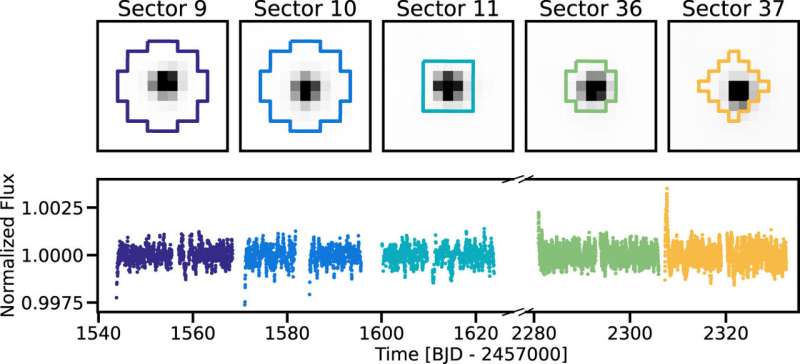This article has been reviewed according to Science X's editorial process and policies. Editors have highlighted the following attributes while ensuring the content's credibility:
fact-checked
peer-reviewed publication
trusted source
proofread
Scientists reanalyze properties of extremely eccentric planetary system HD 76920b

Researchers led by Wu Tao from the Yunnan Observatories of the Chinese Academy of Sciences and Jiang Chen from the Max Planck Institute for Solar System Research reanalyzed properties of extremely eccentric planetary system HD 76920b through detailed asteroseismic analysis of its host star HD 76920.
The study was published in The Astrophysical Journal on March 2.
HD 76920b has an orbital eccentricity of 0.856 (comparable to the eccentric solar system bodies Comet 2P/Encke and asteroid 3200 Phaethon), making it one of the most eccentric planets known to orbit evolved stars.
Solar-like oscillations in HD 76920 were detected for the first time, using five sectors of the TESS light curve that cover around 140 days of data. By utilizing asteroseismic modeling performed by five individual international teams, the researchers determined the improved measurements of the stellar mass, radius and age, and updated the semimajor axis and mass of the planet.
With these updated properties of the planetary system, they confirmed that the planet is currently sufficiently far from the star to experience negligible tidal decay until being engulfed in the stellar envelope. And they predicted this event will occur within about 100 Myr, depending on the stellar model used.
Asteroseismology is most known for its ability to characterize stellar fundamental parameters (e.g., mass, radius, density) to a high level of precision which is a crucial factor in constraining the properties of planets.
This work of asteroseismic analysis emphasizes the potential of stellar oscillations for characterizing exoplanet systems through the synergy between exoplanet research and asteroseismology.
More information: Chen Jiang et al, TESS Asteroseismic Analysis of HD 76920: The Giant Star Hosting an Extremely Eccentric Exoplanet, The Astrophysical Journal (2023). DOI: 10.3847/1538-4357/acb8ac
Journal information: Astrophysical Journal
Provided by Chinese Academy of Sciences





















